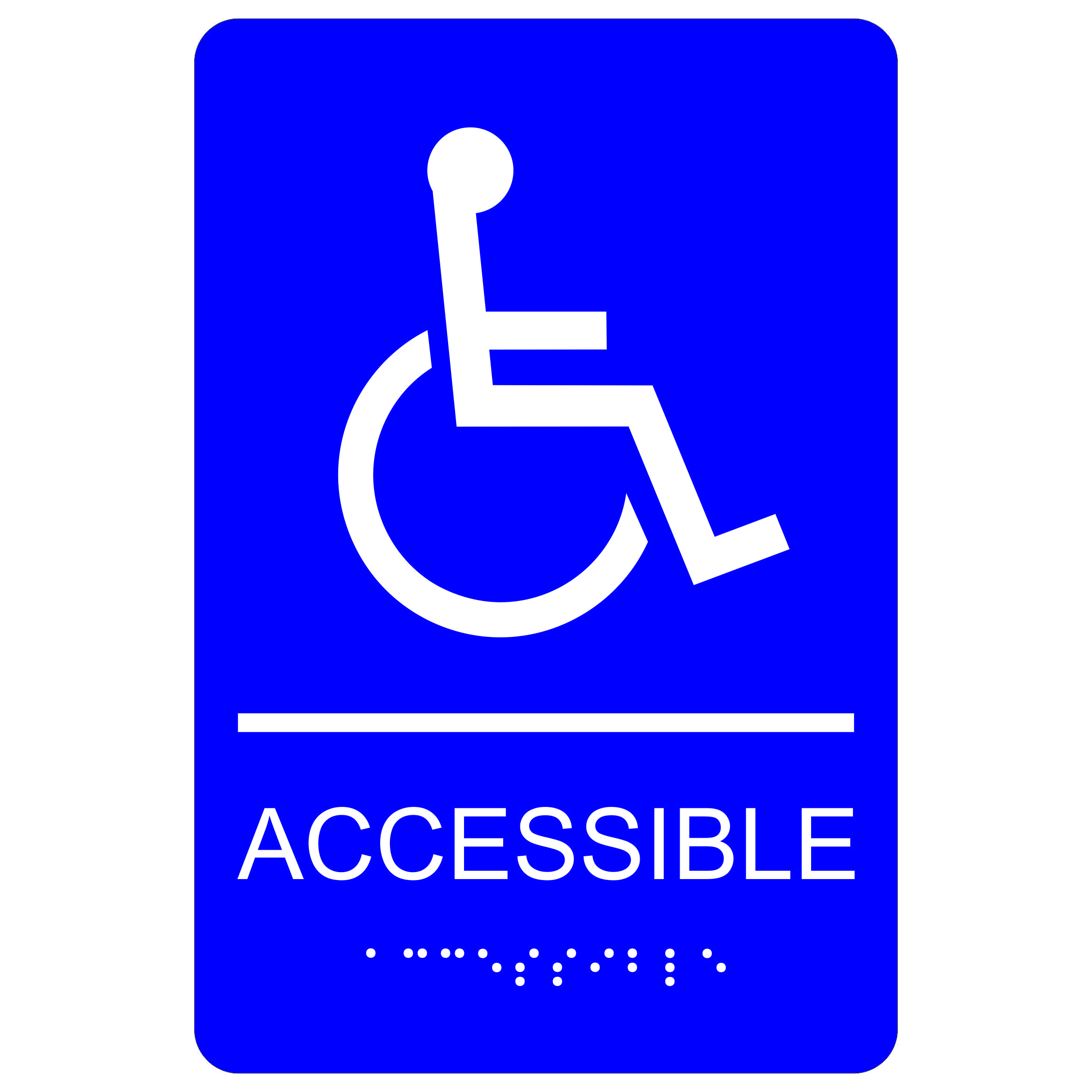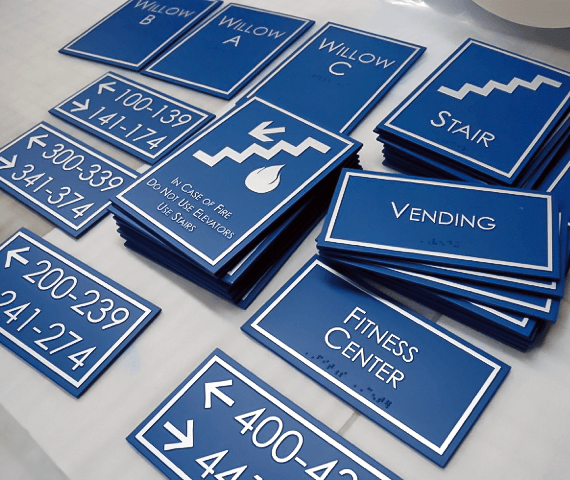The Benefits of Using High-Quality ADA Signs in Your Service
The Benefits of Using High-Quality ADA Signs in Your Service
Blog Article
Checking Out the Secret Attributes of ADA Indications for Improved Availability
In the world of accessibility, ADA indicators serve as silent yet effective allies, making certain that spaces are navigable and inclusive for individuals with specials needs. By integrating Braille and tactile components, these signs damage obstacles for the visually damaged, while high-contrast color plans and legible font styles provide to varied visual requirements.
Value of ADA Compliance
Guaranteeing conformity with the Americans with Disabilities Act (ADA) is essential for fostering inclusivity and equivalent access in public areas and offices. The ADA, enacted in 1990, mandates that all public centers, employers, and transport solutions suit individuals with impairments, guaranteeing they appreciate the very same rights and chances as others. Compliance with ADA requirements not just meets lawful commitments but also enhances an organization's track record by showing its dedication to variety and inclusivity.
Among the vital aspects of ADA conformity is the implementation of accessible signage. ADA signs are designed to guarantee that individuals with impairments can conveniently browse via structures and rooms. These indications need to follow certain standards concerning size, font, color comparison, and positioning to assure exposure and readability for all. Effectively carried out ADA signage helps get rid of barriers that people with impairments often encounter, consequently advertising their freedom and confidence (ADA Signs).
Furthermore, adhering to ADA laws can alleviate the risk of lawful consequences and possible penalties. Organizations that stop working to comply with ADA standards may encounter charges or lawsuits, which can be both harmful and monetarily difficult to their public image. Therefore, ADA compliance is important to fostering a fair environment for everybody.
Braille and Tactile Elements
The consolidation of Braille and tactile aspects right into ADA signage personifies the principles of access and inclusivity. These attributes are essential for people who are blind or visually damaged, enabling them to browse public spaces with higher freedom and self-confidence. Braille, a tactile writing system, is essential in offering created information in a style that can be conveniently perceived through touch. It is generally put under the corresponding text on signs to make certain that individuals can access the information without visual help.
Tactile elements expand past Braille and consist of increased symbols and characters. These parts are made to be noticeable by touch, enabling individuals to identify area numbers, restrooms, leaves, and various other critical locations. The ADA establishes certain guidelines concerning the size, spacing, and positioning of these responsive aspects to optimize readability and guarantee consistency throughout various atmospheres.

High-Contrast Color Design
High-contrast shade plans play a pivotal duty in improving the visibility and readability of ADA signs for individuals with visual problems. These plans are important as they take full advantage of the difference in light reflectance in between text and history, guaranteeing that indicators are quickly noticeable, even from a range. The Americans with Disabilities Act (ADA) mandates using certain color contrasts to fit those with limited vision, making it a vital aspect of conformity.
The efficiency of high-contrast colors exists in their ability to stick out in various illumination problems, including dimly lit settings and areas with glow. Generally, dark message on a light history or light text on a dark history is used to achieve ideal comparison. For example, black message on a white or yellow history gives a stark visual distinction that assists in quick recognition and understanding.

Legible Fonts and Text Dimension
When taking into consideration the style of ADA signs, the option of understandable typefaces and appropriate text size can not be overstated. These elements are important for making sure that indications come to people with aesthetic problems. The Americans with Disabilities Act (ADA) mandates that typefaces have to be not italic and sans-serif, oblique, manuscript, very attractive, or of uncommon kind. These needs aid make sure that the message is quickly understandable from a distance and that the personalities are distinct to varied target markets.
According to ADA guidelines, the minimal message height must be 5/8 inch, and it ought to raise proportionally with checking out distance. Uniformity in message size adds to a cohesive aesthetic experience, assisting individuals in browsing environments successfully.
Additionally, spacing in between letters and lines is indispensable to clarity. Adequate spacing stops personalities from appearing crowded, boosting readability. By adhering to these requirements, developers can substantially improve availability, ensuring that signage offers its intended function for all people, no matter their visual abilities.
Reliable Placement Methods
Strategic placement of ADA signage is important for optimizing availability and making sure compliance with legal standards. ADA standards state that signs should be placed at an elevation between 48 to 60 inches from the ground to ensure they are within the line of view for both standing and seated people.
Furthermore, indications must be placed beside the latch side of doors to allow very easy recognition before entry. This positioning assists individuals situate spaces and spaces without blockage. In situations where there is no door, signs need to be located on the nearest adjacent wall surface. Consistency in indicator positioning throughout a facility boosts predictability, decreasing confusion and boosting overall customer experience.

Final Thought
ADA signs play a vital role in promoting accessibility by integrating features that address the demands of people with impairments. These elements collectively foster a comprehensive setting, emphasizing the value of ADA compliance in guaranteeing equal gain access to for all.
In the world of accessibility, ADA indicators offer as silent yet powerful allies, ensuring that rooms are accessible and inclusive for people with impairments. The ADA, enacted in 1990, mandates that all public centers, companies, and transportation solutions fit individuals with handicaps, guaranteeing they delight in the same civil click for source liberties and chances as others. ADA Signs. ADA signs are made to make sure that individuals with disabilities can quickly navigate via buildings and go to these guys spaces. ADA standards stipulate that indicators ought to be mounted at an elevation between 48 to 60 inches from the ground to guarantee they are within the line of sight for both standing and seated people.ADA signs play a crucial role in advertising ease of access by incorporating functions that resolve the requirements of people with specials needs
Report this page